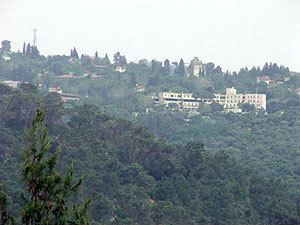Population (2015) 775 | Founded 1950 Local time Thursday 3:31 AM | |
 | ||
Weather 11°C, Wind SW at 13 km/h, 90% Humidity | ||
Beit Meir (Hebrew: בֵּית מֵאִיר, lit. House of Meir) is a religious moshav in central Israel. Located in the Jerusalem hills around nine miles from Jerusalem, just off the Jerusalem-Tel Aviv highway, it falls under the jurisdiction of Mateh Yehuda Regional Council. In 2015 it had a population of 775.
Contents
Map of Beit Meir, Israel
History
The moshav was established on the land of the depopulated Arab village of Bayt Mahsir in 1950, and was named after Rabbi Meir Bar-Ilan. Predominantly an Ashkenazi moshav, there are a number of Sephardi families residing in the village. The moshav is composed of almost entirely religious Jews, and the males members predominantly wear "kipot s'rugot" (knitted kippot), although there are a number of "black hat" and Hassidic Breslov families.
The moshav seemingly makes a large proportion of income through farming. There are farms located in Beit Meir, though their size and utility need to be ascertained so as to ensure that the quality of this article is not compromised. As would be expected from a small community only a matter of miles away from a big city, it would seem that a good percentage of the moshav's residents commute to Jerusalem on a daily basis in order to work. On the moshav, though, there are warehouses and a winery. The moshav is also located in close proximity to Hamasrek Nature Reserve.
A religious Yeshiva called Yeshivat Ohr Yerushalayim, aimed primarily at post-High School American students is also based in Moshav Beit Meir. The Yeshiva does not involve itself much with the local community, but does fit in with the local religious perspective that places high value on learning Torah.
